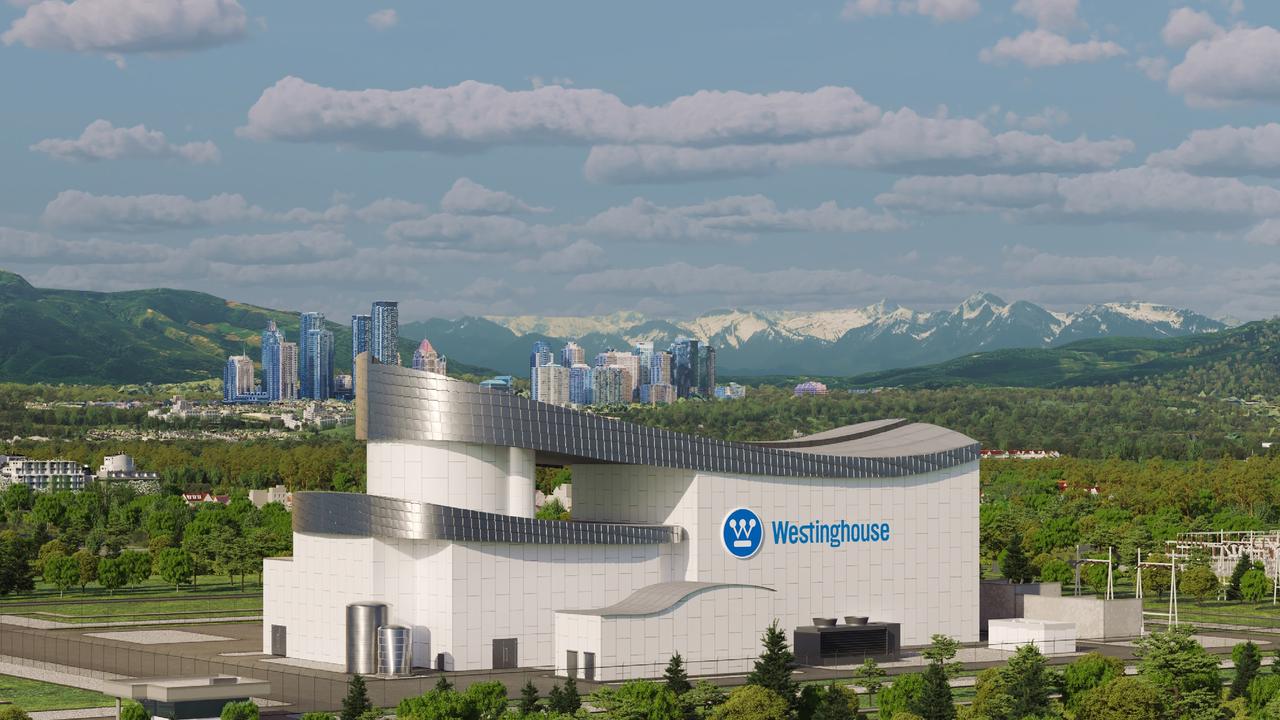If it’s good enough for Bill Gates, why not us?


It’s a “win for America’s energy independence, and the fight against climate change”.
What Bill Gates does not mention is the other US nuclear projects taking place and projects in at least 13 other countries. This is an unprecedented boom driven by climate change. Australia is missing the action..
Yesterday I alerted readers to the global small reactor nuclear boom which has the potential to slash Australian power prices and avoid the looming electricity catastrophe.
But I understated the boom and the fact while we will are set to rely on wind and solar, the non-Australian world now sees nuclear as an essential component to achieving carbon goals.
Given there is very limited nuclear knowledge among Canberra’s energy policy makers and even less in the states, I urged energy minister Chris Bowen to personally go on a nuclear fact finding trip starting with the US and the founder of Microsoft Bill Gates.
In 24 hours I had an email to help prepare Bowen for any Gates visit.

In the 14 countries there are a large number of nuclear projects being designed or constructed using different technologies. Some are devoted to nuclear waste destruction.
The global dispersion of the countries involved is truly staggering and includes the US, Canada, France, Japan, Russia, South Africa, the UK, Sweden, South Korea, Czechia, Poland, Denmark, Argentina, Indonesia and of course, arguably the biggest, China.
For Australia to cement its head firmly in the sand and ignore the global nuclear low cost emission strategies means our power prices will be higher than most other countries.
In Australia it’s stunning that Energy Minister Chris Bowen would ask Peter Dutton to put forward nuclear power costs when the world has already answered that question with small reactors including the 350 megawatts Gates plant which is much larger than most.
Wind and solar have a key role, but when sited in remote areas serving capital cities they are not cheap because of the extras involved and the fact that the plants have a short lifespan.
So with the caveat that what Gates is promoting is just a small part of the boom, it is fascinating to see the enthusiasm the founder of Microsoft generates by directing his talents to nuclear believing it as an essential component to achieving the world’s carbon reduction aims while avoiding Australia’s soaring power prices.
Over to you Bill: “Today (actually its a few months ago) I’m in the town of Kemmerer, Wyoming, to celebrate the latest step in a project that’s been more than 15 years in the making: designing and building a next-generation nuclear power plant. I’m thrilled to be here after all this time—because I’m convinced that the facility will be a win for the local economy, America’s energy independence, and the fight against climate change.
“It’s called the Natrium plant and it was designed by TerraPower, a company I started in 2008. When it opens (potentially in 2030), it will be the most advanced nuclear facility in the world, and it will be much safer and produce far less waste than conventional reactors.
“All of this matters because the world needs to make a big bet on nuclear. We need nuclear power if we’re going to meet the world’s growing need for energy while also eliminating carbon emissions. None of the other clean sources are as reliable, and none of the other reliable sources are as clean.
“But nuclear has its problems: The (old) plants are expensive to build, and human error can cause accidents. Plus, as we move away from fossil fuels, there’s a risk that we’ll leave behind the communities and workers who have been providing reliable energy for decades.
The Natrium facility is designed to solve these problems, and more.
“I’ll start with improved safety. Keep in mind that America’s current fleet of nuclear plants has been operating safely for decades—in fact, in terms of lives lost, nuclear power is by far the safest way to produce energy. And this new facility in Kemmerer will be even better.
“Like other power plant designs, it uses heat to turn water into steam, which moves a turbine, which generates electricity. And like other nuclear facilities, it generates the heat by splitting uranium atoms in a chain reaction. But that’s pretty much where the similarities stop.
“A typical reactor keeps the atom-splitting nuclear reaction under control by circulating water around a uranium core. But using water as a coolant presents two challenges. First, water isn’t very good at absorbing heat—it turns to steam and stops absorbing heat at just 100 degrees Second, as water gets hot, its pressure goes up, which puts strain on your pipes and other equipment. If there’s an emergency—say, an earthquake cuts off all the electricity to the plant and you can’t keep pumping water—the core continues to make heat, raising the pressure and potentially causing an explosion.
“The Natrium plant uses liquid sodium, whose boiling point is more than 8 times higher than water’s, so it can absorb all the extra heat generated in the nuclear core. Even if the plant loses power, the sodium just keeps absorbing heat without getting to a dangerous temperature that would cause a meltdown.
“It also includes an energy storage system that will allow it to control how much electricity it produces at any given time. That’s unique among nuclear reactors, and it’s essential for integrating with power grids that use variable sources like solar and wind.”
Bill has a lot more to say but you get the message.
An essential part of the Gates strategy is that the plant should be part of a coal fired power station complex which has a labour force and community that fears it’s about to be wiped out. In addition, he can now use the existing power grid network that the coal plant uses rather than trying to destroying farmers lives with the massive new power grids.
But there are other nuclear technologies like the Canadian system that is ready to slash BHP’s potash plant power costs.
Here in Australia the current government is ignoring the old bastions of power making skill (and ALP support) in favour of remote solar and wind power generators where there is no grid to take the power to markets and no local community support except far away in inner city electorates. The referendum showed but most of Australia has a different view of the world to what is emanating from the inner city electorates.






Today I received a message that Bill Gates is celebrating the completion of a 15-year project to design and start building “the most advanced nuclear facility in the world which will be much safer and produce far less waste than conventional reactors”.